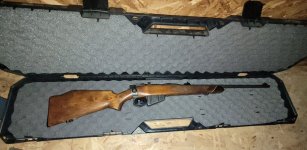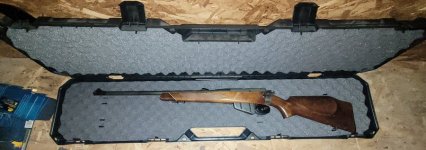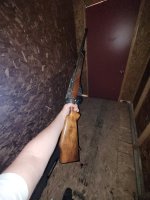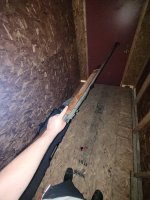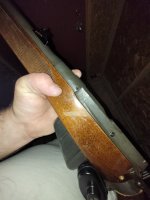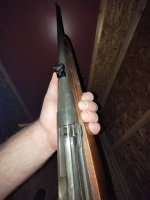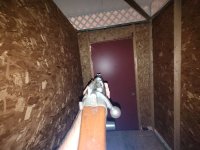Edit: I made a decision and finally bought myself my first rifle!!! Will post pictures below! (Apologies for the poor image quality, the light wasn't working in my storage locker so I had to kind of guess the camera focus in the dark  )
)
*
*
*
Original post:
Hey all, I've been looking for a good first rifle, used and inexpensive that I can abuse without worry, bag a deer or two a season, all while learning about guns.
I really love military surplus, one of my dream rifles is an M1917 .30-06 Canadian issued from WW2 (family served using it).
However
I've recently come across a sporterized P14 at my local gunstore for only $200 that's in fairly good condition! The owner is also well known and has a great standing within the local gun community and is therefore trustworthy (gunsmith, selling is guns is a secondary income to him). He even offered to add a scope mount to it for inexpensive.
Is this a good idea for a first rifle? I've looked around at prices of .303 ammo and it's basically on par if not just a hair more expensive than .30-06 ammo at the moment.
What are your thoughts?
TL;DR : Good 1st hunting rifle Yay or Nay?; Local trustworthy Gunsmith has $200 Sporterized P14 for sale, and currently .303 ammo is on par with .30-06 prices.
*
*
*
Edit 2: The rifle I finally purchased is a barely used sporterized Canadian made Lee-Enfield No.4 Mk1 * (Star) . It cycles rounds like butter, the rifling looks brand new, the only sad part is the barrel was shortened slightly and the rear sights were cut off, otherwise it seems perfect! No rust or pitting at all! The Gunsmith who sold it to me put on a brand new rear stock at no cost as the one that had been *bubba'd* on there had a cheek rest that was much too high to be able to look through the sights and it feels just so good to hold. Will be testing it at the range soon! I also purchased it for only $200!!!
I also purchased it for only $200!!!
*
*
*
Original post:
Hey all, I've been looking for a good first rifle, used and inexpensive that I can abuse without worry, bag a deer or two a season, all while learning about guns.
I really love military surplus, one of my dream rifles is an M1917 .30-06 Canadian issued from WW2 (family served using it).
However
I've recently come across a sporterized P14 at my local gunstore for only $200 that's in fairly good condition! The owner is also well known and has a great standing within the local gun community and is therefore trustworthy (gunsmith, selling is guns is a secondary income to him). He even offered to add a scope mount to it for inexpensive.
Is this a good idea for a first rifle? I've looked around at prices of .303 ammo and it's basically on par if not just a hair more expensive than .30-06 ammo at the moment.
What are your thoughts?
TL;DR : Good 1st hunting rifle Yay or Nay?; Local trustworthy Gunsmith has $200 Sporterized P14 for sale, and currently .303 ammo is on par with .30-06 prices.
*
*
*
Edit 2: The rifle I finally purchased is a barely used sporterized Canadian made Lee-Enfield No.4 Mk1 * (Star) . It cycles rounds like butter, the rifling looks brand new, the only sad part is the barrel was shortened slightly and the rear sights were cut off, otherwise it seems perfect! No rust or pitting at all! The Gunsmith who sold it to me put on a brand new rear stock at no cost as the one that had been *bubba'd* on there had a cheek rest that was much too high to be able to look through the sights and it feels just so good to hold. Will be testing it at the range soon!
Attachments
Last edited:















































